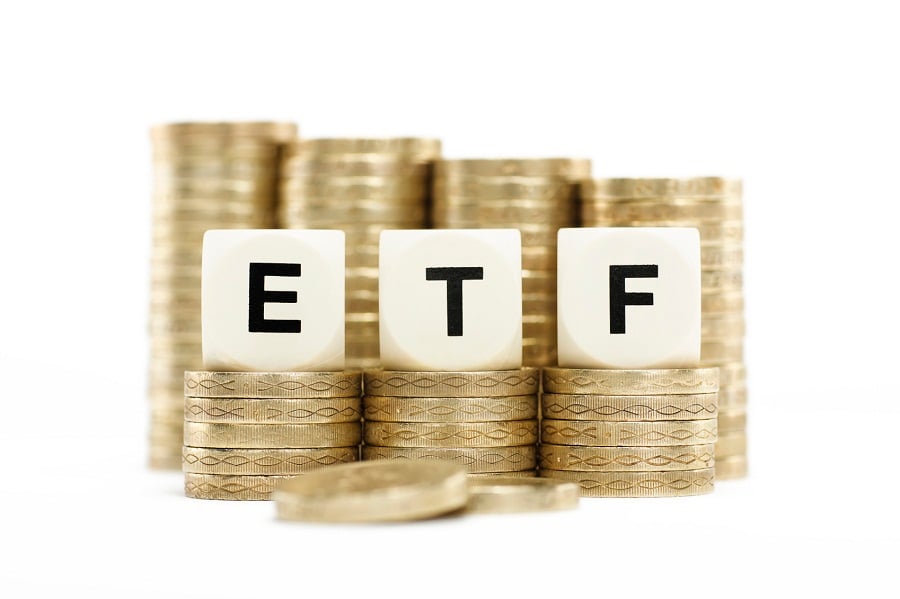Even as U.S. stocks notched their sixth straight year in the black in 2014, investors weren't the only ones to ask when the music would stop.
ETF managers, whose mostly index-tracking products will follow the market down just as they followed it up, also worried.
Last year, plain-vanilla funds such as the SPDR S&P 500 ETF (SPY) and comparable offerings by the two largest brands by ETF inflows, iShares and Vanguard, took off. Those three funds took in an estimated $42 billion, according to Morningstar Inc.
Overall, exchange-traded funds drew nearly $242 billion from investors last year. That number, an annual record for the products, lifted the funds above a symbolic $2 trillion threshold, which compares with $2.8 trillion in hedge funds and about $15 trillion for mutual funds.
But fund companies also launched and sold exotic and uncorrelated funds — and, in many cases, lowered fees on traditional products — before the party ends.
INNOVATION?
Among the most successful new ETFs at raising assets last year were funds tracking international bonds, so-called “strategic beta” strategies and those using hedges to sidestep currency depreciation while registering gains in international stocks.
The funds attracting the most assets, according to an analysis of Morningstar data, included the First Trust Dorsey Wright Focus 5 ETF (FV) and the iShares MSCI USA Quality Factor (QUAL), both “strategic beta” strategies launched in the last two years; the Vanguard Total International Bond ETF (BNDX); and the Deutsche X-trackers MSCI Europe Hedged Equity ETF (DBEU).
In total, those four funds took in $4.4 billion last year, according to an estimate by Morningstar.
At the same time, traditional funds moved to lower their expense ratios, meeting the needs of institutional buyers, including broker-dealer home offices and fund managers who serve financial advisers, according to Will McGough, vice president of portfolio management at Stadion, a major buyer of ETFs and an adviser-sold money manager.
The Vanguard Group Inc., for instance, last month
dropped the expense ratios on its sector ETFs to 0.12%, from between 0.14% and 0.19%.
Mr. McGough said his firm has been using currency-hedging products — many of which are new innovations — such as the WisdomTree Europe Hedged Equity Fund (HEDJ) to access markets.
For all the passive, long-term investors looking to ETFs for their power as cheap index funds, many investors — including Mr. McGough's firm — are among the investors looking to ETFs to intensify their ability to actively trade and tactically invest.
“ETFs aren't just about indexes, they're about delivering the most efficient exposure,” said Dodd Kittsley, head of ETF strategy and national accounts at Deutsche Asset and Wealth Management, which launched seven funds last year.
Mr. Kittsley said portfolio managers who use ETFs are being judged in part by their skill in understanding and combining the funds effectively and differentiating from their peers and competitors.
“How do you build a compelling portfolio and have a cogent strategy of using ETFs,” he said. “If you've met one RIA, you've met one RIA — they're all very different.”
Despite some trepidation about the ability of ETFs to track less liquid securities, advisers rebuilding their fixed-income portfolios after the departure of Pacific Investment Management Co.'s co-founder Bill Gross sought refuge in products like the Vanguard Total Bond Market Index Fund and the iShares Core U.S. Aggregate Bond Fund, the fourth and fifth largest funds by flows last year.
In all, bond funds accounted for $53 billion of ETFs' 2014 total haul.
Financial advisers have been a key part of the growth. Wirehouses, independent registered investment advisers and independent broker-dealers together accounted for $1 trillion in assets in ETFs as of Sept. 30, according to
Broadridge Financial Solutions Inc., a data service.
ACTIVE MANAGEMENT
None of the ETFs in the top 100 by inflows during the year was actively managed, and such funds remain a very small slice of the fast-growing business, according to estimates by Morningstar.
But fund managers are eager to change that. On Dec. 2, Eaton Vance Corp. became the first and only firm to gain Securities and Exchange Commission approval to not disclose the holdings of an actively managed ETF-like investment product. It
plans to launch the funds, called NextShares, as early as the second quarter of this year. A number of other possible actively managed ETF structures are also seeking approval from regulators.







